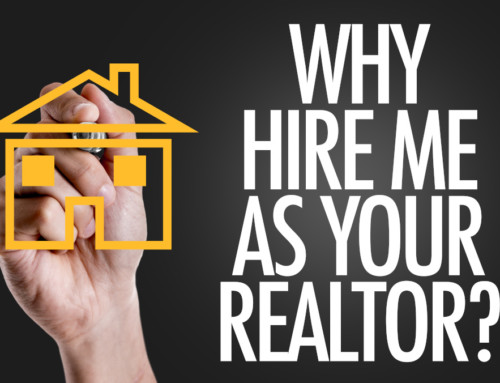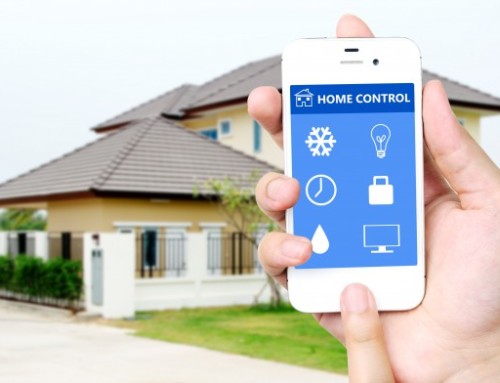This week, there was breaking news about an iBuyer receiving $325m in series “E” funding as well as lots of talk about their business model and game plan. Given all the buzz, I thought it would be a good time to spend time under the hood, to understand how this motor is put together!
First observation:
Opendoor’s model buys homes from homeowners, and then renovates and sells them under Opendoor Homes. Opendoor Homes disclosure for their Florida operations reveals to buyers that they are similar to a home-builder with a brokerage that lists its properties. While Opendoor and Opendoor Homes are separate entities, they are affiliates. Interesting.
 Since Opendoor is operating similar to a home-builder, they are able to include properties in the MLS. In my data sampling of listings, they are offering compensation to the sell side of 3%.
Since Opendoor is operating similar to a home-builder, they are able to include properties in the MLS. In my data sampling of listings, they are offering compensation to the sell side of 3%.
Opendoor promises its buyers with an improved experience through its Opendoor Home technology. There is no need to schedule showings of the property – the home is vacant and is available for buyers to walk-through at their leisure. The home is available for viewing from 6:00 am until 9:00 pm – 365 days a year. No more emails, phone calls, rescheduling of showing appointments, and no more uncooperative sellers and agents. A win-win for buyers.
The mobile app
While talking about the Opendoor Home’s technology, let’s view the drive chain – the mobile native application.
Please fix the search!
When entering the town of a “just listed” property that I found on their web site, the results indicated there were zero properties available to view. I had to do a search by zip code to find the property. Luckily, I was able to locate the home because Opendoor Homes only had three properties for sale within the zip code.
I also did not see any feature to find properties around me. It would be nice for buyers who are driving through neighborhoods to be able to see other properties that are available. This feature may not be available at this point since their portfolio does not contain much inventory; perhaps a strategic decision on their part.
The UI (User Interface) of the mobile application can be improved as well. I don’t understand why mobile applications put their navigation on the top of the screen. Stretching the thumb to the top of the screen on your phone is like trying to tie your shoes without your thumbs. All you have to do is look at Instagram, LinkedIn, and Google’s app to understand what best practice is in navigation design.
Curiosity!
So, let’s be curious and understand how the motor and tranny runs – let’s open the tax record history of one of Opendoor’s homes for sale. Disclosure: This is only one property and further analysis is required to validate any metrics on Opendoor’s model and business operations.
The “just listed” property I found on the web site is in the MLS, and Opendoor Homes is the listing broker. The tax records indicate the homeowner who sold the home to Opendoor purchased it ‘new’ in 2012 for $272k. This homeowner then sold it to Opendoor Homes Phoenix, LLC in May 2018 for $335k. Opendoor Homes has the home listed for sale at a list price of $364k.
AVM’s
More curiosity sets in. How does the $364k listing price stack-up to the AVM’s?
• RPR = Range: $309k – $364k | RVM: $336k with a 5-star confidence.
• Zillow Zestimate = Range: $331k – $365k | Zestimate: $347k
How much will Opendoor make on this home?
There are plenty of seller “estimated closing costs” calculators available online we can use for this exercise. Let’s assume the home sold for ‘asking price’ because of the current market. After entering some values such as annual property taxes, location of the home, sold price, real estate commission percentage, and projected sale date, I arrived at what the homeowner would expect to have in their pocket after closing on their home. Opendoor Homes is roughly going to net around $11k on this home.
Note: The $11k Opendoor made on the property is the approximate list side commission the original homeowner would’ve paid.
There are fees to the homeowner who sells to Opendoor.
According to Opendoor.com Pricing page, the fees to sell your home to them is between 6% and 13%. In this case, the original homeowner would have paid $20k (6%) in fees to Opendoor Homes and walked away with $315k. This means the original homeowner would have $40k of positive equity after 6 years of owning the home.
The end results.
The original homeowner relinquished $20k for a quick closing. They eliminated the mortgage and title challenges, eliminated the hassle of preparing the home for showings, and eliminated the endless phone calls and emails during the negotiations of a sales contract. This equates to the homeowner giving up approximately 33% of their equity for convenience to sell the home.
On the other hand, Opendoor is probably close to breaking even on the sale of the home. We all know there are general costs to execute a real estate transaction when selling a home.
Opendoor can probably stay in positive cash-flow on this home due to the $20k fee received from the purchase. As a side note, Opendoor is currently spending $2B dollars to purchases homes.
Thoughts
It is not surprising that Opendoor has injected $645m of total equity financing into the company. When you are buying homes and are scaling the operational components of the company, it requires you to hire a bunch of people. Just look at all the open jobs with Opendoor. When reviewing job titles and descriptions, each market area is very heavy on operational expenses. It would be interesting to know what the company’s proforma is on projected gross margins for one, three and five years.
How did Opendoor obtain the label of iBuyer?
My thoughts are that they are operating on a similar idea to all of the people who were flipping homes prior to the last economic downturn. Opendoor is just scaling it to the next level and with VC funding. This is why I say they are iFlippers, and I am not “head over heels” with their valuation. Will there be 10 or even five times return on investor money? I don’t know.
What I do see on this one property, the margins are slightly better than a today’s brokerage firm.
Wait and see.
I will continue to track this property and report back when it does sell. I would like to see the final deal. I do know one thing. If I was an agent and had a customer interested in this home, I would provide the above information to them for full transparency. I am sure they would quickly come to a decision about what their offer price is for the home.





Let’s make sure that we have the apples and the oranges identified here. The “investment” of an added $300 million plus will allow Opendoor to rotate approximately 1000 new $300,000 properties in and out of their portfolio. The majority of this capital is not being applied to costs to operate the Opendoor business, but to acquire and fix properties for resale in the “Opendoor fund.” This type of “funding” is in sharp contrast to typical start-up companies like Trulia, Zillow, RealScout and the like. In those cases, the capital raised is much less and is totally applied to the costs related to the operations of the company. Investors in Opendoor are likely looking for, (1) a return on investment for both the acquisition and, (2) sales of the properties as well as in the Opendoor business model as a strategic investment model.